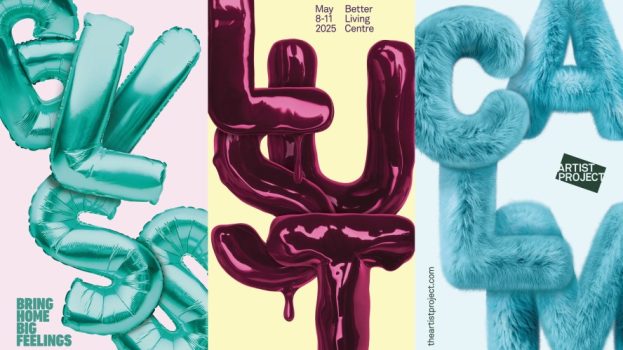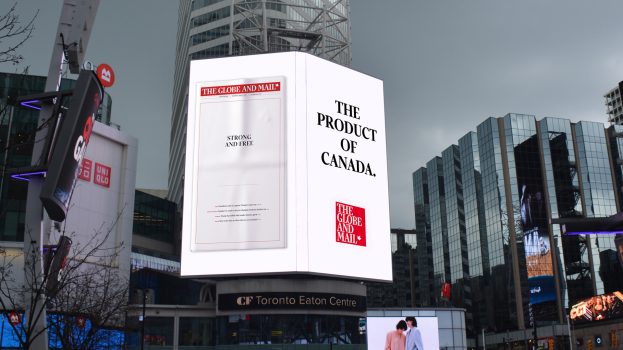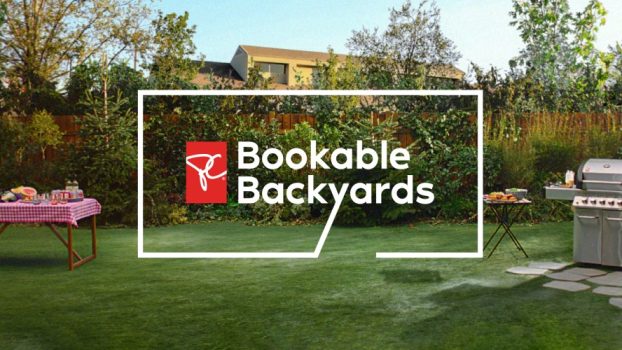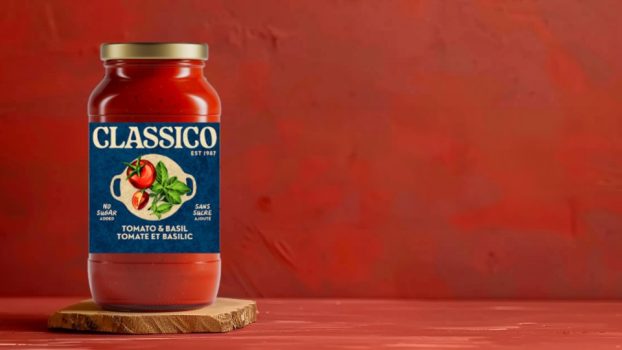Part of the fun of being in the ad game is trying to figure out what new gimmick the denizens of out-of-home will come up with next. If you think they’ve already packed ads into every available outdoor space, think again. From hi-tech kiosks to waiting room TVs, new technology and creative thinking continue to pump out new ways to get people to stop and look.
Canadian advertisers spent nearly $300 million on out-of-home advertising in 2000 – that’s approximately 4.6% of all media spending, according to AC Nielsen.
O-O-H executives are expecting that figure to increase even more this year, as skittish advertisers rethink their media budgets and look for ways to make them go farther.
Mediacom adds hi-tech twists to the old standard
Mediacom, which has been around since 1904, is trying to prove that you can teach an old dog new tricks. Particularly in the past few years, this national billboard, poster and transit shelter company has been looking to add a little creativity to the more traditional segments of the out-of-home advertising industry.
Brian McLean, president of Mediacom, says advertisers are using out-of-home more and more for what they can’t find in other media – tonnage and reach.
‘The out-of-home business has been hot the past few years and continues to be, as the media marketplace becomes more and more crowded, and buyers are having trouble figuring out how to reach people in a mass way.
‘Even though we may be the last mass, national medium, we’re still getting pretty niche in micro in terms of zeroing in on certain demographic groups with geodemographic mapping by ethnic group, income or neighbourhood.’
Standard billboards have gotten a lot more creative with 3-D effects, mounted objects and even sound. Labatt Breweries’ new summer effort, the ‘Official Blue Light Weekend Countdown’ board, has speakers that blast each Friday to mark the beginning of the weekend.
Mediacom has also added new twists to backlight posters and billboards with scrolling and rotating. These new products are designed for prime locations in markets where no new billboard space is available.
Scrolling backlights in high-traffic areas are timed to change with the flow of traffic so everyone gets a chance to see the messages from the three advertisers on the face.
Trivisions are the new breed of billboards. The three-sided billboards rotate but also have louvres that change the ads to allow 40 to 50 advertisers to be in one location.
McLean says this motion makes the posters and billboard messages dramatically more memorable to consumers. Mediacom is currently researching awareness levels in Canada, while research in the U.S. shows that the rotating and scrolling products offer about 80% awareness compared to the usual 40% to 50%.
Mediacom’s bus shelters have been turning a lot of heads over the last couple of years, as creativity has literally gone through the roof – and sides – of the shelters. McLean says his company wants to encourage creatives to approach it with their ideas, and if they’re legally possible, Mediacom will figure out how to get it done.
Such tailored special-effect executions include a recent campaign for Lever 2000 Pure Rain body wash that turned a shelter into a shower. And last year, Perrier perched a working air-conditioner on top of the shelter, with a dairy-case cooler inside and a visual on the outside of a man looking a little frozen.
Jamieson Vitamins currently has an actual vitamin bottle on the end of a shelter in Toronto. Disney has added a giant video cassette cover to the end of one shelter, while Budweiser built a beer bottle onto the end of another that was bigger than the shelter itself.
Mediacom has also recently entered the construction business, at least in New Westminster, B.C.
In order to get some billboard space in a community that up until now hadn’t allowed it, Mediacom built a pedestrian/bicycle overpass above a major highway to link an elementary school to a recreation centre.
Mediacom now has four billboard faces at the overpass as well as several others in the community. McLean says the company has received a lot of interest from municipalities hungry for funding for similar projects.
PHSN tunes into
waiting-room TV
Amie Rocket, VP of marketing and sales for Professional Health Service Network (PHSN), came up with the idea of creating a closed-circuit network for doctors’ waiting rooms when her father was ill and she was taking him to a lot of medical appointments.
‘I just sat there frustrated, anxious and not knowing what was happening with my father. I would have liked something there to entertain me. That’s how the whole thing came into being,’ she says.
PHSN provides 90 minutes of programming transmitted via DVD to 19-inch monitors in the waiting rooms of physicians, dentists, health care clinics, and labs. The company is also beginning to expand into hospitals.
It is currently in 200 waiting rooms in Toronto – some of them serving up to 80 physicians – and is installing units in 200 more. PHSN will be moving into Ottawa over the next few months.
The programming is designed in three-minute segments including entertainment, sports, fashion, travel and generic health programming, suitable for viewers of all ages. Joan Harding, former editor of Toronto Life Fashion, is at the anchor desk. The programming is changed monthly.
Global Television, one of PHSN’s content providers, produces some of its own content, such as a recent interview with Toronto Maple Leaf Mats Sundin.
There are a total of 19 minutes of 30-second spots in the programming with each spot standing alone. Current advertisers include the Toronto Blue Jays, 20th Century Fox, the Heart and Stroke Foundation and Prescott Paper.
Right now PHSN is offering advertisers three 30-second spots in the 90-minute programming for $15,000. Rocket says 1.3 million people see one spot each month at a cost-per-thousand of $11.50. That one commercial is shown 18 times a day, 360 times per month. She says because the programming is flexible, PHSN can work with advertisers to accommodate longer-format ads or sponsored content.
PHSN does not have any pharmaceutical advertisers as yet, but Rocket says the ad would have to go before the network’s advisory board of physicians and dentists.
‘There is definitely a fine line where pharmaceuticals are concerned,’ says Rocket, ‘and we would never take on anything that was contentious.’
Ray Chepesiuk, commissioner of the Pharmaceutical Advertising Advisory Board (PAAB), says that pharmaceutical advertising on such a closed-circuit network would still be deemed as directed at the general public, so it would fall under the same Food and Drug guidelines as other direct-to-consumer pharmaceutical advertising. Those regulations allow for name, quantity and price advertising or alternatively, advertising that talks about a health condition, does not mention the pharmaceutical product and suggests that patients talk to their doctors to find out about prescription drugs available for their condition.
Buildings wrapped in ads just a Sign of the Times
Sign of the Times Media has recently opened its doors in Toronto and brought four new ad products into the marketplace: Taxi Vision, the Interactive Media Network, Impressions on the Go and Building Impressions.
Jeff Wills, VP and co-owner of the company, is a former media buyer who most recently headed MacLaren McCann’s M2 Universal retail division.
He says advertisers will always use traditional media such as TV and newspaper, but he feels that O-O-H can offer strong innovative media support.
‘Talk to any media person and they’ll tell you that clients, no matter what business they’re in, are always looking for something different. I’d never say you shouldn’t be using television, but there’s something to be said for having something new and interesting on media plans for clients.’
Taxi Vision, the company’s first product, is a multi-faceted offering with opportunities both inside and outside the cab and even, in the fall, in magazine advertising.
Outside are a couple of traditional properties, including an illuminated four-sided rooftop sign plus window-back advertising, which uses four-colour lamination technology to allow driver and passengers to see out.
Based on a per-unit cost, rooftop signs are $400 per cab and window backs are $300. Wills suggests that 100 cabs are the breakpoint for the Toronto market for maximum impact.
Inside the taxis, advertisers have three vehicles to choose from.
An on-board video system called Cab TV features two eight-inch screens. One has both audio and video capabilities for running 30-second commercials, and the second has 10-second pop-up ads without motion or sound. To do a four-week campaign in 100 cabs using :30s costs $1,400. The static message on the other screen can be produced for $300.
Wills says his company can use existing commercials for the video screen, while the pop-up ads appeal to advertisers without broadcast creative or those wanting to provide more detailed information. For example, the Toronto Blue Jays have a TV commercial, but with the static message screen, the team can show the week’s game schedule.
Later there will be an on-board magazine rack with a free Taxi Vision magazine. Wills says it will be a destination guide for tourists and residents alike with information and advertising about the city’s shopping, restaurant, bars, events, and tourist destinations.
Sign of the Times is also selling advertising on the Interactive Media Network, a point-of-purchase, touch-screen kiosk that will begin arriving in 152 PharmaPlus Drug Marts in late June. There will be five kiosks in each store, situated in key areas such as cosmetics/beauty, pharmacy, vitamin/analgesic, snack foods and household goods.
Flyers will be available online, along with product information, advertising and different category channels such as men’s, women’s, and children’s health and cosmetics/beauty. A sweepstakes promotion will be part of the introduction of the kiosks, so that consumers try out and get comfortable with the touch-screen terminals.
There are several different ways advertisers can buy into these kiosks. Hotlinks are premium buttons appearing on every page that allow advertisers to link consumers to their Web site. A Hotlink on every page in every store would cost $6,200 for a four-week cycle.
Channel ads are similar, but appear only in specific sections of the terminal such as health or beauty. They are available at $3,700.
When a consumer is not using the kiosks, video commercials will be shown in a six-minute loop. Commercials are being sold in 15-second units at $90 per store for four weeks.
The Interactive Media Network is exclusive to Katz Group’s PharmaPlus chain from Ontario west, while other deals are in the works to make it a national pharmacy network. The kiosks will also be rolled out in bar and restaurant venues.
Sign of the Times will also soon be hijacking consumers’ cars for Impressions on the Go, a car wrapping product that can cover all, part or only the window of a vehicle. Selected consumers with noteworthy cars such as SUVs or PT Cruisers will be paid roughly $300 per month to plaster them with ads.
Impressions on the Go is being sold in 12-week cycles, initially at $5,500, including production.
Finally, but perhaps most striking, is a product that can turn whole skyscrapers into the biggest billboards in the city. Used in Los Angeles by movie companies for high-profile launches, Building Impressions is a building wrapping service using the same 3M technology as window-back advertising and Impressions on the Go.
Wills says this medium has more impact if used sparingly. He expects Toronto will be limited to only five or six buildings. The cost will be somewhere around $15 per square foot, or $15,000 for 1000 square feet of high-impact advertising.
Wills says both Impressions on the Go and Building Impressions will soon be rolled out nationally with emphasis on centres such as Vancouver and Montreal.
Wild on Walls switches on ultrabright street screens
Wild on Walls Media Technologies offers full-motion outdoor video billboards at street level (12 to 14 feet from the ground). The company launched its second Toronto location this past March, and now operates in two high pedestrian and vehicle traffic areas.
The LED technology used for the video billboards is extremely luminous and eye-catching, similar to boards seen in New York’s Times Square, to compensate for the sun during the day.
George Christidis, vice-president of Wild on Walls, says the billboards reach people where they spend most days – near or in the office, while also having the added bonus of being very close to retail locations.
Ads are video-only, 10 seconds in length and put together in a 90-second loop. The ads cost $5,000 per calendar month, and marketers get 960 spots a day. Clients generally rotate several different executions and new ones can be added to the rotation within hours.























